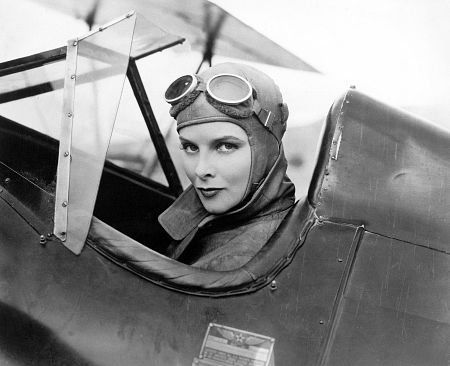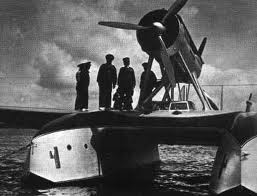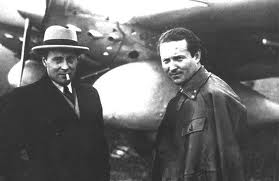Never thought I would write 50 reviews about aviation books, but here it really is: my 50th review! And to think that, as a child, I hated books. I didn’t even read the bub bles in comic strips. I am humbly grateful to all those writers of beautiful books who gradually won me round!
bles in comic strips. I am humbly grateful to all those writers of beautiful books who gradually won me round!
I carefully pondered o ver which book should have the honour of being the subject of the 50th review and ‘The Spectacle of Flight’ by Professor Robert Wohl won hands down. Just look at the book itself, take it in your hands and it is a no-brainer. The book covers an era when aviation was making huge leaps forward, and the accompanying romance and the hero worship was at its height. It was also a time when, in my eyes, the most impressive and beautiful aircraft were built; the aircraft which would ultimately form the basis of aviation as we know it today.
ver which book should have the honour of being the subject of the 50th review and ‘The Spectacle of Flight’ by Professor Robert Wohl won hands down. Just look at the book itself, take it in your hands and it is a no-brainer. The book covers an era when aviation was making huge leaps forward, and the accompanying romance and the hero worship was at its height. It was also a time when, in my eyes, the most impressive and beautiful aircraft were built; the aircraft which would ultimately form the basis of aviation as we know it today.
Had I been born around 1900, I fancy I would have become an aviation pioneer, airplane designer or a famous Hollywood film star featuring in all the aviation blockbusters. I would then have rightly earned a mention in Robert Wohl’s cracking book. ‘The Spectacle of Flight’ follows on from his earlier book ‘The Passion for Wings’ which I shall be reviewing shortly – also a beauty, I can already reveal.
So what is this book about? About the esthetics of flying, aviation and the inspiration that this has been on our culture. This might sound a little woolly, but the author – as a scientist and aviation enthusiast – manages to capture perfectly, in word and illustrations, the relationship between aviation and the inspiration it generates. After his foreword, Wohl describes over 6 luscious chapters the most important developments in aviation between 1920 and 1950. Contrary to many scientific tomes, this generously and stunningly illustrated book is elegantly written and easy to read.
The first development to be chronicled is Charles Lindbergh’s historical flight on 21 May 1927 from the US to Paris. Wohl paints a vivid backdrop: it was a time when relations between the United States and France were somewhat cool after the First World War, and, only two weeks after the Frenchmen Nungesser and Coli had crashed during their attempt to cross the same ocean, but from east to west. Robert Wohl beautifully describes how, despite all this, the French were the first to warmly take Lindbergh to their bosom and hail him as a hero. The tale of Lindbergh’s historical fl
the same ocean, but from east to west. Robert Wohl beautifully describes how, despite all this, the French were the first to warmly take Lindbergh to their bosom and hail him as a hero. The tale of Lindbergh’s historical fl ight is magical enough, but Wohl’s pen makes it an even more fascinating story. For example, did you know that on his way to the American Embassy, Lindbergh stopped off at the Arc de Triomphe to pay his respects at the tomb of the Unknown Soldier? No superficial book this: Wohl regales us with copious and captivating detail.
ight is magical enough, but Wohl’s pen makes it an even more fascinating story. For example, did you know that on his way to the American Embassy, Lindbergh stopped off at the Arc de Triomphe to pay his respects at the tomb of the Unknown Soldier? No superficial book this: Wohl regales us with copious and captivating detail.
From Lindbergh in Paris, the writer takes us to Mussolini’s fascist Italy and we bathe in the Italian passion for aviation. Wonderful details about Balbo who, as the leader of a squadron of 14 seaplanes, flew from Italy to Rio de Janeiro and back again. In Italy Balbo became the hero of all heroes. Exquisite photos and almost even more beautiful art and architecture, illustrate the designs around the theme of aviation of that time. Robert Wohl recounts extensively the effect aviation had on all Italians. Happily aviation wended another way than Mussolini expounded in 1923. He felt that aviation was not for the masses, only for the higher echelons of society. However, he did concede that all could dream of flying!
Utterly original and, to my mind, scientifically correct, is Wohl’s account of the effect aviation had on the film industry of the time. It was all the rage, and such a phenomenon had never before been witnessed. Nowadays flying is so much part of our lives that the current film industry rarely targets aviation for the general public. Of course, people such as pioneer and author Saint-Exupéry and his close friend, Mermoz are not excluded from this tome, but feature in full detail and with wonderful accompanying photos. Saint- Exupéry greatly admired Mermoz, who had become almost as famous as Lindbergh because of his airmail flights along the Atlantic routes, his night-flying and his perilous trips over the Andes where, during one flight, he miraculously survived a crash.
But this book is not just about immortal and bewitching aviation. In Chapter 5
Wohl ‘analyzes’ the other side of the coin: the mortality of aviation which built itself up through all the ensuing technological developments. The technology available in the 30s, in combination with the abrasive nature of vying world powers led to aircraft being used for totally different ends than gaining world records and creating heroes. Suddenly, in the big symmetrical Second World War it became all too apparent how deadly airplanes could be when loaded with bombs. Whilst the First World War spawned heroes flying around in their biplanes, the image of aviation Second World War was less romantic. Wohl describes this episode in his own original style, paying attention to the good and bad heroes of the time and to the enormous ravage caused by the various bombardments, which were new to history and which shocked the world. It was an age in which aviation lost its innocence for ever.
The final chapter shines yet another light on aviation. Aviation has conquered the world. It is an inextricable part of our present life and will grow with us as we move towards the future. Its influence is plainly to be seen in our town planning, and in the architecture of our airports and terminals. Wohl describe
s these developments admirably. He gives us pause for thought when he picks out some aviation heroes of times gone by and their vision of the role of mankind in the changing world. Take German war hero Ernst Jünger, for example. Jünger felt that flying machines stood mankind in better stead to reach higher and deeper goals. Mmm, yes… my, how we have excelled in this!
I experienced the last part of the book as a somewhat contemplative way of looking at the functionality of aviation from different perspectives. Wohl also dedicates some time to heroines. After all, it slowly became apparent that women were just as capable as men of flying and achieving extraordinary aviation feats. Katharina Hepburn, Jean Batten… Strangely enough he did not include Hanna Reitsch. But I forgive him.
The book is printed on sumptuous paper which makes it a good, solid book to hold in your hands. The book is easy to read, but if you do no more than look at the beautiful illustrations you will be kept pleasantly busy for hours on end. Robert Wohl has succeeded in bringing aviation across to his readers, not only in a scientific way, but also his accessible prose is written with a good dose of passion, which sweeps you on from page to page as you explore aviation in an original new footlight.
Onwards and upwards towards the 100th review!















Leave a Reply